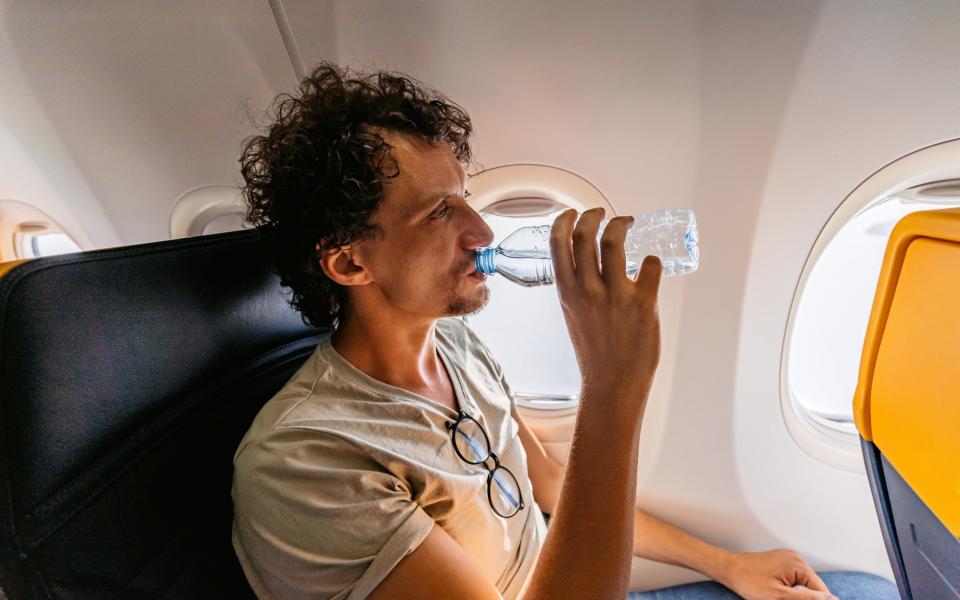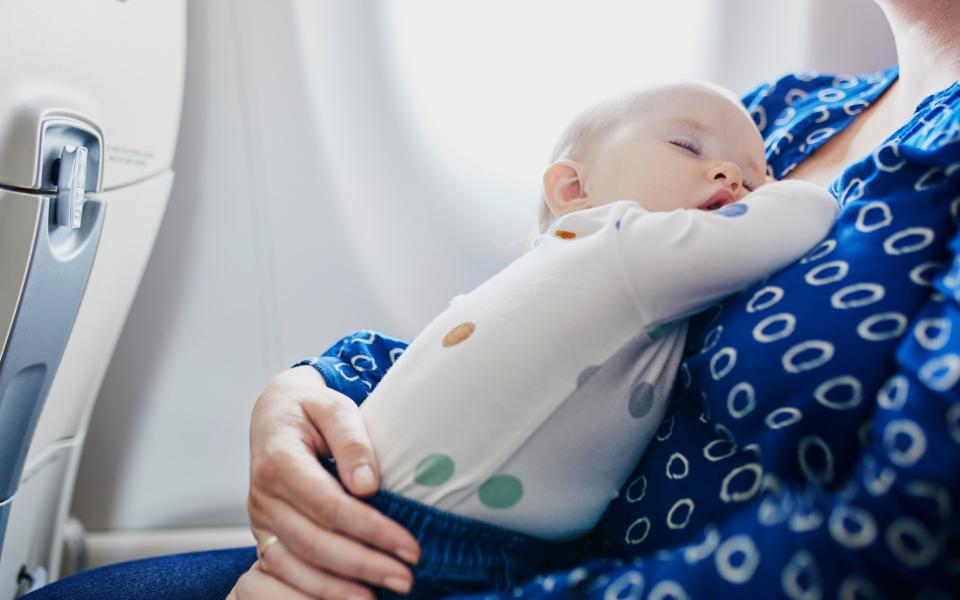The hidden health risks of flying

Earlier this month passengers on a Delta flight from Atlanta to Barcelona had a nasty surprise when their plane was diverted due to a bout of diarrhoea. “It was a mess,” one of them wrote on Twitter. “The pilots made the right decision to turn around. The ground crew ripped out the carpet and put new in.”
From light bloating to DVT (deep vein thrombosis), the list of possible air travel-related ailments runs from the trivial to the potentially fatal, via the downright embarrassing. But it’s stomach upsets and viruses that you’re most likely to pick-up en route. And the danger starts before you’ve even boarded.

“Infection from airport touch points is very common and could ruin your holiday,” said Dr Preethi Daniel of the London Doctors Clinic. “Avoid things like lift buttons and escalator handles (but obviously be mindful of safety)”.
Once you’re on board the chances of illness or infection are fairly slim, though “very young babies, the very elderly, pregnant women and people with weak immune systems should all be careful of the health risks,” said Daniel. What are these and is there anything you can do to prevent getting sick? We spoke to the experts to find out.
Stuck in the middle
Taking to the air can undoubtedly do strange things to your stomach. “Plane cabins have low humidity levels, which can cause dehydration and lead to digestive issues,” said Ashleigh Tosh, health and nutrition expert at Prepped Pots. That could mean constipation and bloating or, worse, the dreaded diarrhoea.
To dodge embarrassment, Tosh recommends avoiding caffeine, alcohol or heavy or spicy foods and drinking plenty of water (although not tap water from the plane, which may be contaminated). If you can afford to upgrade, it’s worth splashing out on a flatbed too. “Lack of sleep can impair your immune system and impact your digestive health,” she said.

What about catching a cold or other virus from a sniffly passenger?
“Viruses are not ‘spread’ by air in a flight,” said Daniel. “Of course, if someone sneezes next to you there is a chance you could catch something but plane filtration systems and high velocity airflow make this less likely”.
You’re unlikely to get sunburned either. Despite recent speculation about the risk of skin cancer through sun exposure via cabin windows, Australia’s Cancer Council has said that “windows in the passenger cabin are generally constructed of three layers of plastic. These materials are highly effective at blocking both UVA and UVB, ensuring passengers are not at risk”.
The dangers of DVT
Another well-publicised danger is DVT. “It’s not that common and tends to affect populations with a predisposition to it, such as those who are obese, pregnant or suffer from clotting disorders, but it is very serious if it occurs as it can be life threatening,” said Daniel.
Physiotherapist Helen Davison recommended checking with your GP before flying if you’re at risk, as well as wearing compression socks and making time to move around the cabin regularly as lack of movement over a long period of time increases the probability of a clot. Exercise should also help stem post-flight stiffness.

“I normally say to my clients, ‘watch a film and then, when it’s ended, walk up and down on tiptoes, march on the spot, do some ankle circles. Then sit back down, watch the next film and repeat,” she said.
Babies on board
Children have their own plane-related issues. There’s a reason babies scream on flights: though older children and adults are generally able to relieve ear pressure by swallowing, younger kids find it difficult though crying helps. People with ear infections might find the process more difficult and, in severe cases, could even experience a ruptured eardrum: for this reason, the CAA advises anybody with an ear, nose or sinus infection not to fly.
If you’re travelling with kids, choose your seat carefully too. Sitting at the back of a plane makes motion sickness more likely – and, with it, more tears. Also, “watch out for communicable infections,” warned Daniel. “Children tend to touch (and even lick things!) they shouldn’t”.
If you do get ill, the pilot will make a decision on what to do based on the severity of the symptoms. “Crew are usually trained in basic life support and they also carry very basic equipment. Depending on severity of the illness, support can be sought from fellow trained passengers or the pilot can divert to make an emergency landing. It’s also possible to reduce altitude to help with certain conditions,” said Daniel.

Frequent fliers
The long-term risks of working as a pilot or aircrew are the subject of further study. In 2023, a International Fume Event Task Force made up of medical professionals and academics publicly called for the aviation industry to act on cabin fumes, highlighting the fact that crew and passengers are exposed to low levels of engine oil and hydraulic flood decomposition products leaking into the air supply on every flight.
It also outlined a medical protocol for dealing with fume events (described by the CAA as “an unusual odour, mist or smoke on an aircraft”), which may cause dizziness, headaches and slowed thought processes, according to The Association of Flight Attendants. Dr Susan Michaelis, who led the force and stopped working as a pilot two decades ago after getting increasingly ill, called the issue a “discreet and emerging occupational health syndrome”.
In 2020, a report by the UK’s Industrial Injuries Advisory Council (IIAC) also found that pilots and cabin crew were more than twice as likely as the general public to get malignant melanoma after five years of work. The reasons are unknown, though it suggested that this may be due to a combination of factors including UV exposure outside the aircraft and repeated disruption of circadian rhythms due to shift work.


